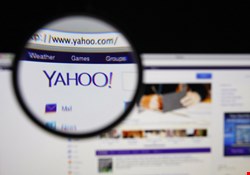
Users can still manage their privacy on the service, however – it will just be a manual process. “We encourage our users to tailor their online experience through the variety of privacy tools we offer within our own platform, accessible via our Yahoo Privacy Center,” the company said in an online statement. “The privacy of our users is and will continue to be a top priority for us.”
As such, the internet giant is spinning the move as one that will let users customize their web experience. “Here at Yahoo, we work hard to provide our users with a highly personalized experience,” it added. “We keep people connected to what matters most to them, across devices and around the world. We fundamentally believe the best web is a personalized one.”
In 2007, several consumer advocacy groups asked the US Federal Trade Commission to create a DNT list for online advertising, so that consumers could opt out of having digital marketers track their movements online via cookies and other methods for the purpose of serving targeted advertising. The proposal would have required that online advertisers submit their information to the FTC, which would compile a machine-readable “blacklist.” The top browser vendors, including Yahoo, Mozilla, Microsoft, Apple and Google, added support for DNT, but not all ad companies implemented DNT in the same way, leading to a fragmented approach that has bogged down any meaningful movement on DNT.
The Digital Advertising Alliance pulled its support last autumn from the WC3, which was working toward a standard on behalf of its members, thus setting up a scenario where the DAA would create its own DNT approach, adding to the non-standard landscape.
Yahoo also cited the problems in terms of implementing DNT on a standardized, widespread level. “As the first major tech company to implement do not track, we’ve been at the heart of conversations surrounding how to develop the most user-friendly standard,” the company said. “However, we have yet to see a single standard emerge that is effective, easy to use and has been adopted by the broader tech industry.”